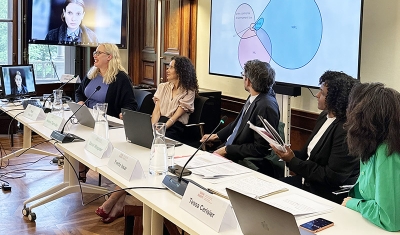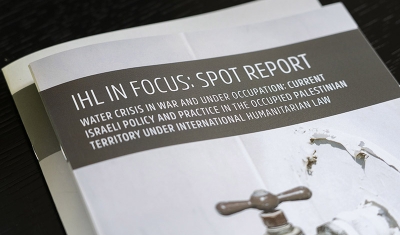Does the Recent Peace Agreement Put an End to the Non-International Armed Conflicts in Sudan?


UNAMID
7 September 2020
Our Rule of Law in Armed Conflict (RULAC) online portal provides a detailed analysis and legal classification of the various non-international armed conflicts (NIACs) that are taking place in Sudan between the Government of Sudan and a number of armed groups in Darfur province and Kordofan and Blue Nile states.
In this interview, our Research Fellow Dr Chiara Redaelli explains why the recent peace agreement does not put an end to these conflicts.
What is the context that led to the adoption of the agreement?
Sudan has been affected by non-international armed conflicts (NIACs) for decades. Following the overthrow of President al-Bashir, the Transitional Military Council (TMC) and the Forces for Freedom and Change (FFC) agreed on a Draft Constitutional Declaration, which requires the conclusion of a peace agreement to put an end to the conflicts in Darfur, Kordofan, and Blue Nile states. Accordingly, on 31 August 2020, after months of negotiations, the transitional government of Sudan signed a peace agreement with the Sudan Revolutionary Front (SRF), an umbrella organization that was founded in 2011 by the four major armed groups operating in Sudan, namely the Sudan People’s Liberation Movement/Army–North (SPLM-North), the Sudan Liberation Movement/Army–Abdel Wahid (SLM/A–AW), the Sudan Liberation Movement/Army–Minni Minnawi (SLM/A–MM), and the Justice and Equality Movement (JEM). Nevertheless, not all armed groups member of the SFR have accepted the deal. Specifically, the SLM/A–AW and the SPLM/North Hilu refused to sign it.
Does the new peace agreement change the classification of the situation? Why?
RULAC has identified the existence of separate NIACs between Sudan and a number of armed groups, in particular, the Justice and Equality Movement (JEM) and the Sudan Liberation Movement/Army–Abdel Wahid in Darfur, and at least two factions of the Sudan People’s Liberation Movement/Army–North (SPLM/A–North).
To determine the end of a NIAC, the conclusion of a peace agreement is not enough in itself. Indeed, armed confrontations can continue beyond the signing of the agreement and international humanitarian law (IHL) continues to apply to these instances of violence. Therefore, although the deal between Sudan and the SRF is landmark and hopefully will determine the end of hostilities, it is too early to conclude that the NIACs are over. Indeed, it is worth recalling that previous peace agreements did not lead to an end of the armed conflicts. This was the case with the Darfur Peace Agreement, adopted in May 2006, the Eastern Sudan Peace Agreement, concluded later the same year, and the peace treaty signed by Sudan and the major armed groups operating in Darfur in 2010.
What does this mean concretely for both the government of Sudan and the armed groups?
According to the agreement, the opposition groups committed to dismantle their forces and to integrate their fighters into the Sudanese army. Furthermore, the deal covers aspects related to security, transitional justice, power-sharing, as well as the return of displaced people to their homes.
What criteria should be met to declare a NIAC over?
The criteria to determine the end of a NIAC are not specified in the Geneva Conventions. Article 2 of the Additional Protocol II clarifies that IHL ceases to apply ‘at the end of an armed conflict.’ However, it does not define what does that mean in practice.
RULAC agrees with the approach adopted by the International Committee of the Red Cross (ICRC). Namely, a NIAC is over when one of the parties ceases to exist or when armed confrontations have ended for a considerable amount of time and are unlikely to resume. On the other hand, as mentioned above the mere existence of a peace agreement, an armistice or a ceasefire is not enough to conclude that the NIAC is over. Similarly, a temporary lull in the hostilities does not automatically determine the end of a NIAC.







